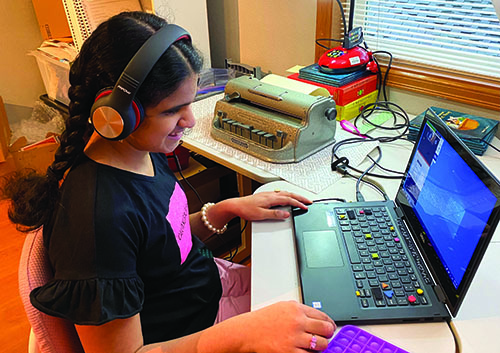Why Does Accessibility Matter in Procurement?
The procurement process significantly influences whether:
- Digital learning tools and platforms are accessible;
- Students have access to appropriate hardware, such as large screens; and
- Assistive and accessible technologies are delivered in a timely manner.
Teachers cannot meet student needs without the right equipment.
Teachers of students with visual impairments (TVIs) have reported:
“All the students got the smallest size Chromebook possible. I was requesting a lot of extra equipment for my students because the Chromebook wasn’t accessible.... Last spring break when COVID hit, the district did a great job getting the kids equipment right away. But when they purchased for 2020–2021, the VI kids weren’t thought about. Once we could justify, they were great. It took way too long because everyone was ordering tech at the same time.”
“Software platforms are really inaccessible. They were made for university students. Super irritating. They should be way more accessible and a universal requirement for a school district to only purchase accessible software. Makes it so much harder for my kids to access the content.”
Examples of Accessibility Challenges for Blind and Low Vision Students
- Programs that must be controlled by a mouse rather than a keyboard or other input devices.
- Videos and pictures without text or audio descriptions.
- Unlabeled buttons and forms.
- Timed quizzes or games that move too quickly for the student.
- Devices, like Chromebooks, with screens that are too small for someone with low vision to read or effectively use a magnifier on.
There are many other barriers, such as a lack of captions or information overload, that affect people with disabilities other than blindness.
Improving Procurement to Promote Accessibility
- Amend policies and procedures to prioritize accessibility
- Take an inventory and develop a plan for accessibility
- Build a cross-organizational culture of accessibility and inclusion
- Define your accessibility requirements
- Understand Voluntary Product Accessibility Templates (VPAT)
- Evaluate the accessibility of products under consideration
- Embed accessibility requirements in vendor relationships and contracts
- Conduct accessibility testing, document problems, and communicate
Resources
Links to resources, including those listed below, are available on the AFB Toolkit Resources page.
- AIR’s Digital Accessibility Toolkit: What Education Leaders Need to Know
- Disability:IN’s Disability:INclusive Workplaces Accessible Technology Procurement Toolkit
- U.S. Department of Education’s Office for Civil Rights Video Series on Digital Access
